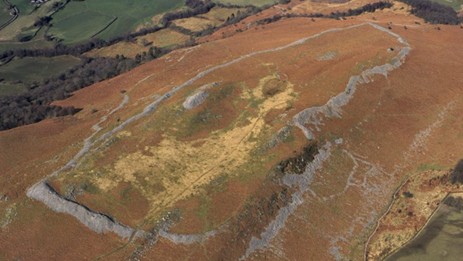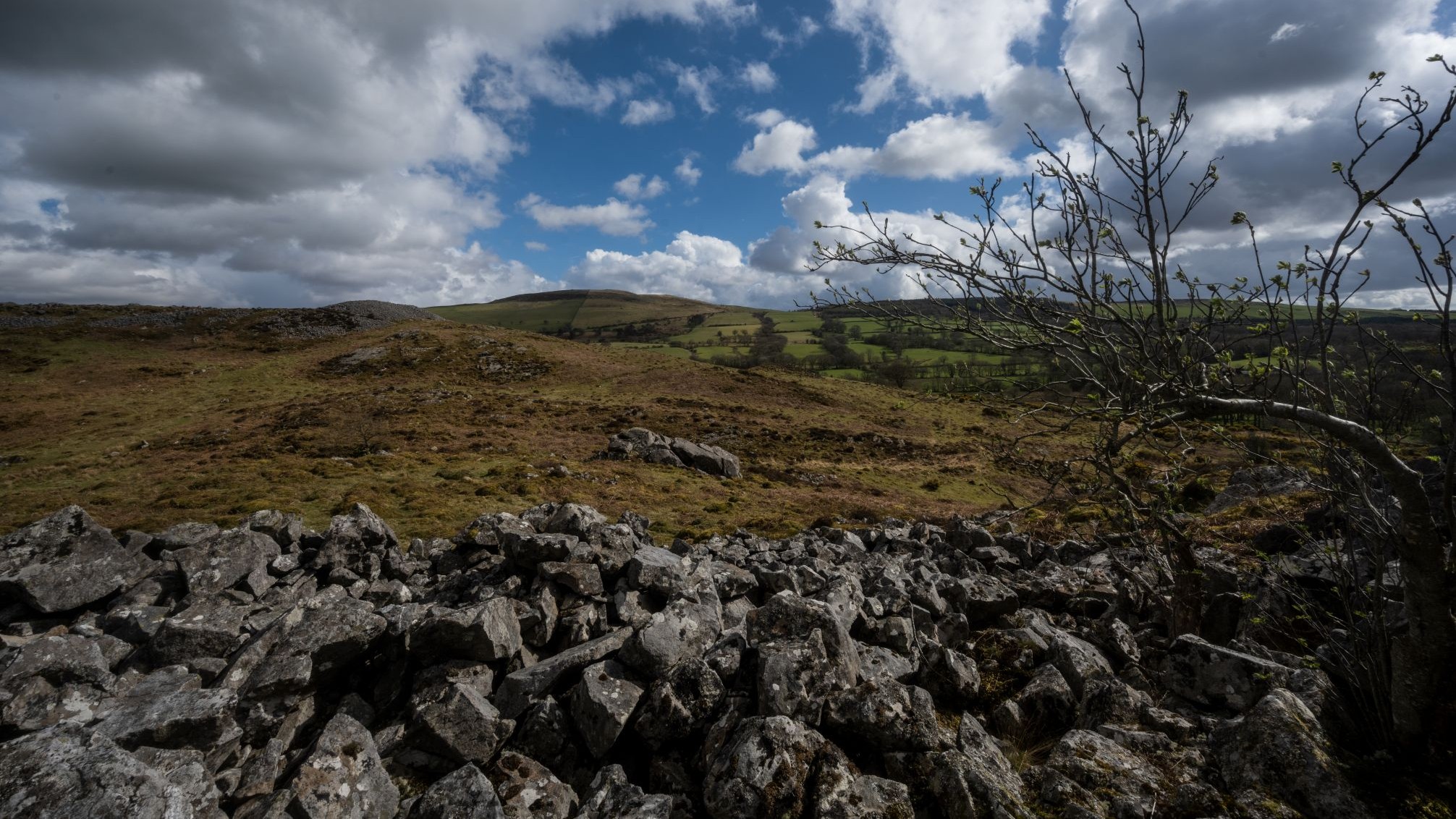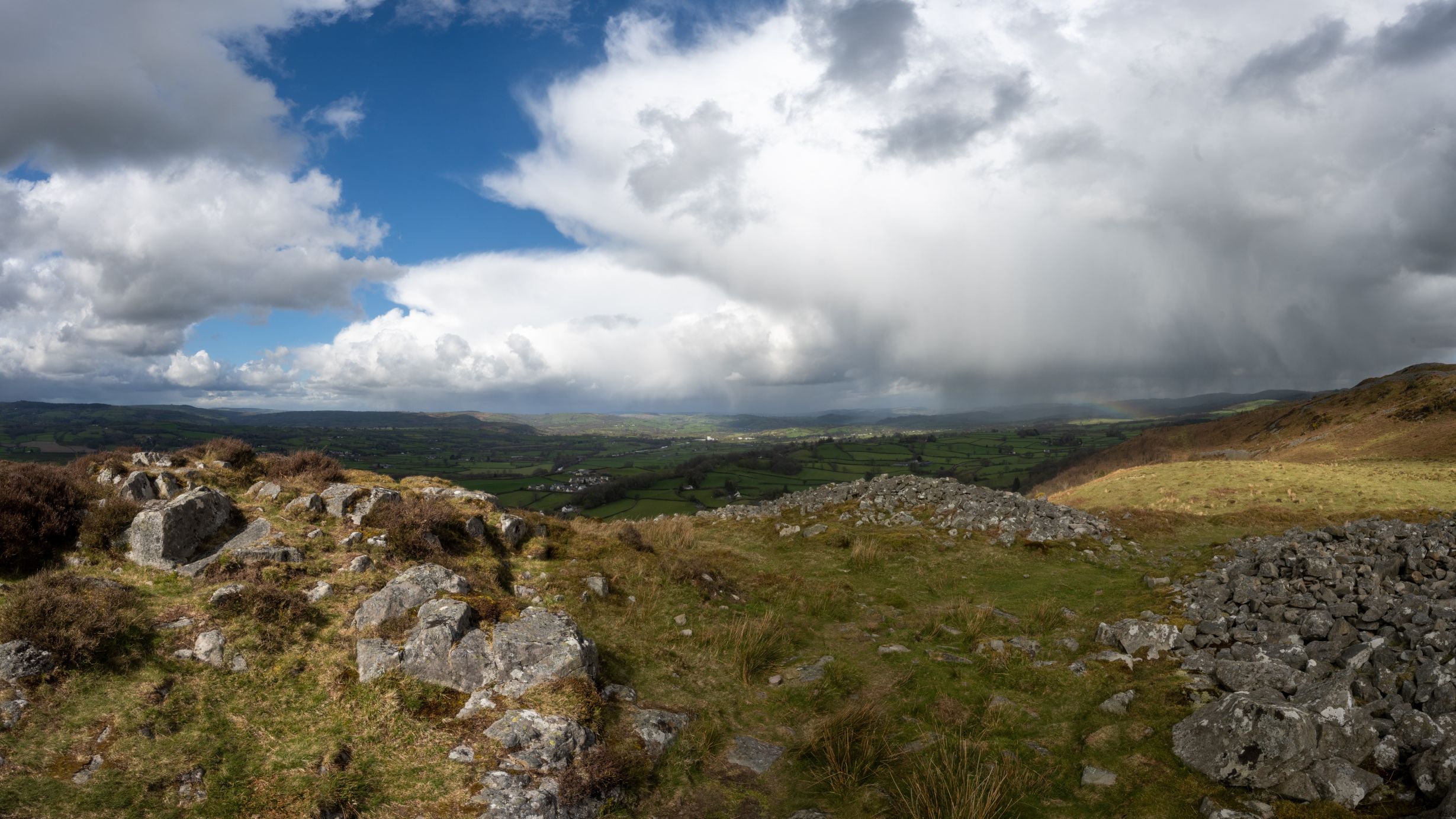Y Garn Goch
Visit Y Garn Goch, once a major Iron Age settlement site near the town of Llandeilo, West of the Bannau Brycheiniog (Brecon Beacons) National Park.
A major hill fort
Y Garn Goch was a major Iron Age settlement site near the town of Llandeilo, but nowadays feels quiet and remote.
At just over 11 hectares this is one of the largest hillforts in the whole of Wales.
2,500 years ago this hilltop would have been a thriving centre where people lived and worked, where food was grown, where goods were produced and traded.
This impressive fort would have been a sight to behold, the equivalent of a skyscraper of its day – a statement the power and status for those that had it built.

The defences at Y Garn Goch
Its stone defences, a large rubble bank today, once stood as ramparts 10m high and 5m thick and would have offered protection from natural dangers such as wild wolves, and against other humans when attacked.
There are the remains of two hillforts on this site: the smaller fort of Y Gaer Fach sits in the shadow of its much larger and impressive neighbour.
The smaller fort, Y Gaer Fach, encloses an area of one and a half hectares and survives in a ruinous state. It appears to be incomplete, perhaps abandoned part way through a programme of rebuilding.

Getting there
Both forts are easily accessible from a small car park at the base of the hill, and the well-trod path will take you first to fort Y Gaer Fach and then on to Y Gaer Fawr. The views from the top are superb. Our ancestors stood in the same spot 2,500 years ago and if you take away the modern field boundaries, farms and bridges you are looking at a similar Iron Age landscape the river flowing down an open valley with hills rising in the distance.

How were the hill forts used?
Although there are many interpretations of the evidence Iron Age people left behind at Y Garn Goch, nobody is sure of the exact purpose of these defended settlements.
Were they defensive structures used for safety in times of trouble and warfare?
Perhaps they were permanently occupied towns and centres of trade, or centres of religion and ritual?
Visit the sites, see for yourself and join us in our speculation of the function of this magnificent Iron Age legacy.
